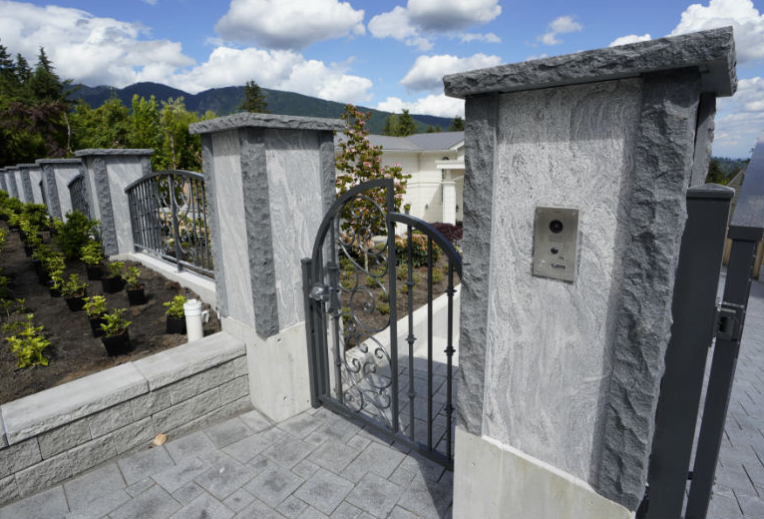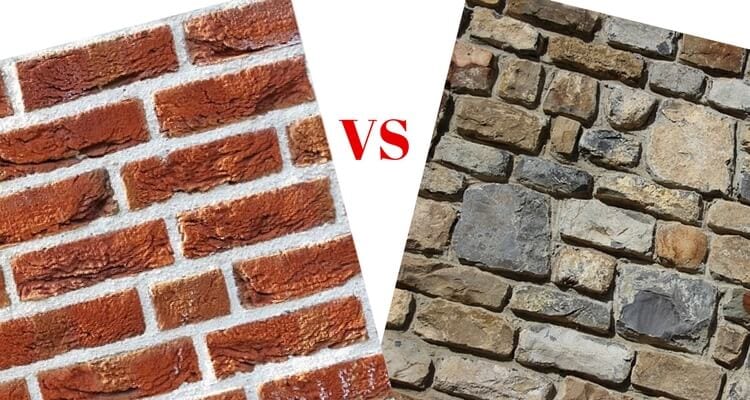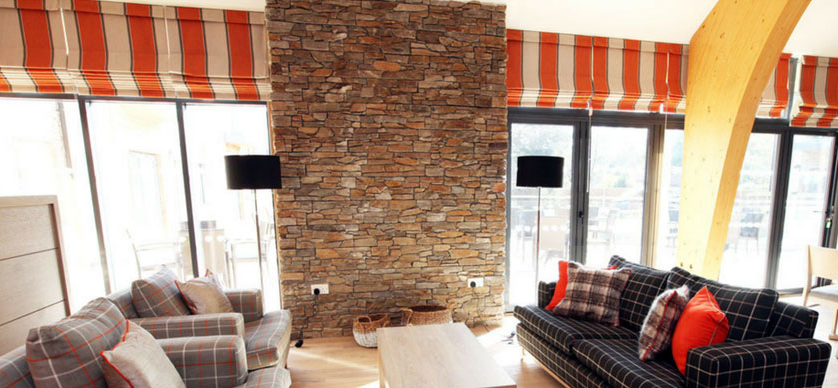Everyone wants the real thing, yet many of Vancouver’s high-end homes have been faking the natural-stone look. Walkways, driveways, pillars, and other such features are built with concrete that’s made to look like natural stone.
That’s because natural stone has been impractical to work with for many reasons — but Kenny Fung of Dexter Natural Stone has come up with new methods of constructing and installing it, making it a practical and beautiful home feature.
For example, he found a way to keep the stones stable so they won’t start wobbling after a couple of years when you walk or drive over them. He also found ways to make granite pillars and outdoor stone tables, benches, and other furniture, easier to build and maintain.
He’s helping change the standard across the luxury home market in Vancouver. “The trend is switching to natural paving stone when building high-end houses,” Kenny says. He says it can cost a homeowner about $5,000 more to build a feature with stone than with concrete, but that feature can increase the value of the house by some $50,000.
Setting new standards
Kenny and Jacky Fung, Dexter’s product manager, explain how the industry has changed over the years. About 20 or 30 years ago, homeowners typically poured concrete driveways. Then a decade or so ago, high-end pavers that imitate natural stone became the standard for luxury homes.
But an imitation always falls short of the real thing, and luxury consumers especially seek genuine products. “If you have natural stone or granite, it looks completely different,” Jacky says. “Because it’s a luxury home, it should be different, right?”
Fung will showcase his innovations at the Luxury Home & Design Show in June, hosted by our sister media Taste of Life in Vancouver. He gave us a preview of how his systems work.
How he did it
Dexter makes interlocking natural stones more stable by putting specially designed plastic spacers between the stones where their corners meet. These spacers hold the stones in place, create uniform gaps, and allow the stones to distribute the pressure between them. The spacers aren’t visible, as the gaps are filled in with a “jointing sand” which also covers the spacers.
“You’d be driving and would feel them rocking on the ground, they would feel unstable,” Kenny says of natural stone driveways without his DP Interlocking System, which he developed six years ago. Not only do Dexter’s stones not wobble, they also have an advantage over concrete in that they don’t fade over time.
Kenny founded Dexter 36 years ago, and has always looked for ways to improve industry methods. For constructing stone pillars and outdoor furniture — what Dexter calls Stoniture — Kenny repurposed a technique used to build high-rises, called “envelope engineering.” This technique makes structures strong enough to withstand high-magnitude earthquakes.
He says it’s similar to how Ikea furniture is assembled, where one section is inserted into another with screws. The difference is Dexter is using granite slabs with a steel structure inside, instead of wood. The screws Dexter uses are made to withstand immense pressure.
Kenny created an assembly system with pre-cut slabs that fit into place without the need of mortar. With his advancements, he’s able to reduce labour time by 60–70 percent.
Building granite pillars and furniture in sections has several other benefits. For example, if you move, and you want to take your granite bench or table with you, then you can dismantle it and set it up again, since each section only weighs a manageable 100 pounds.
“It’s like furniture, when you move you can bring your table, your chair to the new house,” Kenny says. “With other stone furniture, the tonnage is very hard to move.”
If someone backs into the granite pillar with a car — a surprisingly common accident — Dexter can replace just the damaged section. With a masonry pillar, it has to be rebuilt or repaired, which is costlier.
“With ours, you break a corner or you break one panel, we take that panel off, we replace it, and that’s it,” Jacky says.
The initial construction or rebuilding of a masonry pillar is also inconvenient because using mortar is weather-dependent. “If you have a deadline, we can build in the rain,” Jacky says. Masons, on the other hand, need mortar to set, and it can’t if it’s wet outside. That can push a building schedule back several days, especially in Vancouver where it rains often.
Also, when it rains, mortar has minerals that leak out and run down the pillar, leaving a white residue called efflorescence. “It ruins the look over time. It’s not something that’s easy to clean off,” Jacky says. “That basically happens to every other house that you drive by. That doesn’t happen with our pillars.”
A pillar of luxury
Dexter appeals to a luxury market not only because it provides genuine products instead of imitations, but also because it provides a service that is important to that market — customization.
“If you look everywhere in Vancouver, you see the houses built in their own style, but once you go out to see the pillars, they only have no more than ten types,” Kenny says.
“A lot of the pillars or short walls don’t match the house. If the homeowner wants to match the pillar and the fencing with the house, we have a wide range of flexibility to change the color, finishing, shape, and, [for businesses, we can] add a logo . If a house has a lot of curves, we can make the pillar more curved too.”




Leave a comment
This site is protected by hCaptcha and the hCaptcha Privacy Policy and Terms of Service apply.